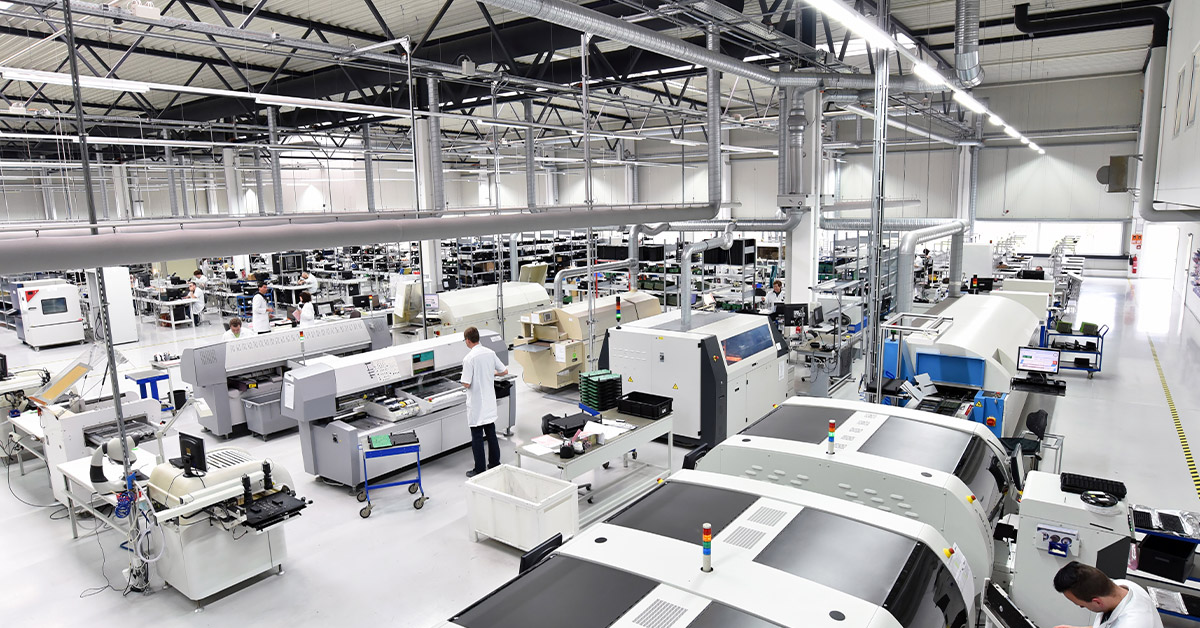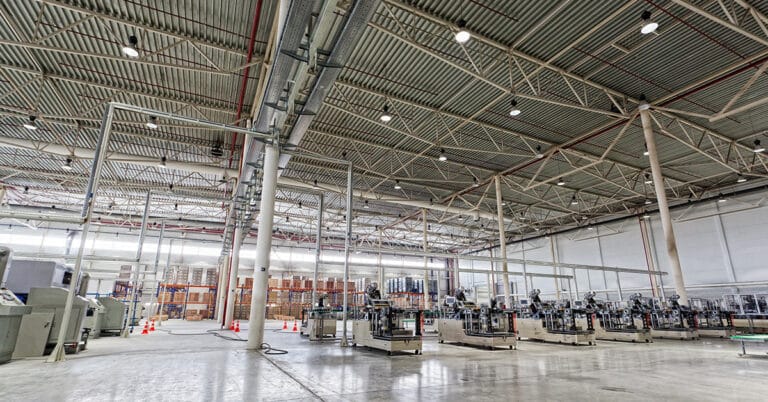What is manufacturing overhead? This is an important topic because, as it can make up a large proportion of the cost of goods sold (COGS), it has a big influence on profitability.
Manufacturing overheads are all the costs associated with producing products that can’t be tied directly to individual products. Most manufacturing businesses maintain very tight control over direct costs, but these production overhead costs are often harder to get a handle on. This blog offers some guidance with an emphasis on what can be one of the biggest and most complex areas: maintenance.
What is manufacturing overhead?
These overhead costs encompass all the expenditures necessary to run production but that cannot be tied directly to the items coming off the production lines or machines. They are sometimes referred to as “indirect costs” to differentiate them from the direct costs of raw materials and the labor used to run machines. For example, the wages of those who operate the machines would be classified as direct costs, whereas salaries for production supervisors would fall under indirect costs. This is not to say that indirect costs are unnecessary or wasteful, but merely to distinguish them from costs that are directly tied to a single product unit.
Any costs incurred to produce product that cannot be classed as direct costs, are manufacturing or factory overhead.
Manufacturing overhead costs
- Indirect labor: Production supervisors, managers, possibly also janitorial staff if not classified as maintenance, and fork truck drivers.
- Maintenance: This covers both the cost of the people who perform maintenance work and the materials and equipment they use.
- Indirect materials: Tools used for cutting, grinding, forming and molding (unless capitalized, in which case they are covered under depreciation), cutting fluids, and lubricants not included as maintenance materials.
- QC expenses: Inspectors and the equipment they use, (other than large items which are capitalized).
- Utilities: Electricity, gas, and water. Internet costs may also be included for a factory using large numbers of Industrial Internet of Things (IIoT) devices.
- Depreciation: Financial charges to spread the cost of buying machinery and large, long-lasting items of tooling, over multiple years.
- Taxes and insurance: Property taxes paid by the factory, plus the cost of insuring it.
Take a look at this chart for some examples of fixed and variable costs as well as how they compare:
Fixed overhead costs | Variable overhead costs | |
Examples | Factory rent, property taxes, equipment depreciation, supervisor salaries, insurance | Raw material handling, utility costs, maintenance supplies, overtime wages, packaging materials |
Cost behavior | Relatively stable over time, typically unaffected by changes in production output | Can increase or decrease with production levels, with more units produced leading to higher costs |
Predictability | Highly predictable, making budgeting easier | Less predictable, can vary with production demand and operational changes |
Impact on cost control | Harder to reduce in the short term, requiring long-term strategic changes | Easier to control with production adjustments or efficiency improvements |
Typical allocation method | Allocated evenly across a given production period | Allocated based on production activity, such as machine hours or units produced |
It’s sometimes useful to look at costs such as maintenance overhead in terms of whether they are fixed or variable. Fixed costs are those that don’t change in relation to production volumes. Property taxes and insurance are good examples. Other costs, however, rise and fall depending on how busy the factory is, and this is especially true for maintenance.
In general, heavily utilized equipment needs more maintenance, (assuming some kind of hours-based strategy). In addition, maintenance work has to be done outside of normal working time, which raises labor costs. Thus, maintenance costs are generally considered variable.
Manufacturing overhead formula
It’s important to measure manufacturing overheads for three reasons:
- Budgeting and financial reporting
- To determine product line contribution to overall profitability
- For overhead tracking — variances and trends can show if operations are under control
To calculate manufacturing overhead costs, start by obtaining total costs listed above. Manufacturing overhead is then the sum of these numbers. Added to total direct costs, it produces the COGS figure used in financial reports.
When budgeting future overheads, variable costs can only be estimated with knowledge of expected production volumes and an understanding of the connection between the two. This can be obtained from historical records.
Estimating the profitability of individual product lines requires a way to allocate overhead costs. Historically, many businesses did this by direct labor, but this approach is less useful in an era of highly automated manufacturing. Allocation methods used today include:
- By machine operating hours: Machines or lines that run longer will carry a larger share.
- By space occupied: Products that need more floorspace for their manufacturing equipment carry a bigger share of overheads.
- Using engineering estimates: Informed judgments are made as to the amount of maintenance, heat, light and other actual overhead costs each product line should incur.
- Activity-based costing: A formal accounting-based process is used where operations determine the allocation of overheads.
For trend monitoring, variances and year-on-year comparisons are useful, but an easier number to monitor, especially in a “dashboard” scenario is, is the manufacturing overhead rate (MOR). This is calculated as a percentage of total revenue:
((MOR = (Σ(Manufacturing overheads)) / Total revenue)) x 100
This percentage varies widely between businesses in different industries, with differing processes and types of equipment, and different levels of automation. Its main value is therefore as a goal and for monitoring overhead trends.
Ways to optimize manufacturing overhead
Most businesses are strongly focused on minimizing overhead costs. However, many of these are set by the factory footprint and the complexity of the operations being managed. Thus, in the short-to-medium term, (1 – 3 years), the main targets are:
- Indirect materials
- QC expenses
- Maintenance costs
A particular challenge with reducing these is to avoid creating additional overhead expense elsewhere. Opportunities and points to consider are set out below.
Indirect materials
Simply extending replacement intervals, risks creating problems with product quality. Instead, task engineering teams with exploring alternative tools and other consumables (advances in materials technology may mean longer-life versions are available).
QC expenses
Reducing inspections risks customers receiving defective or substandard product. Instead, explore implementing machine vision and poke-yoke devices throughout manufacturing to prevent errors and catch any that do occur.
Maintenance costs
Running equipment until failure is very expensive. To avoid this, most manufacturers perform some preventive maintenance, often on a scheduled basis. This extends equipment life and reduces breakdown frequency but carries the risk of doing unnecessary maintenance work. Better options are:
- Implement machine conditioning monitoring: Temperature sensing, particularly by thermal imaging, and vibration monitoring are proven methods for detecting problems before they become serious enough to impact production. This allows maintenance work to be scheduled for when it’s less disruptive and expensive.
- Use IIoT sensors: Using inexpensive sensors with communication and sometimes also processing or analysis capabilities, it’s possible to gather large quantities of data on every aspect of every manufacturing process. Combined with advanced analytical tools, this Industry 4.0 approach provides prompt notification of any abnormal conditions.
- Adopt predictive maintenance strategies: Condition monitoring and Industry 4.0 technologies enable determination of future maintenance needs. This cuts out unnecessary preventive work and improves scheduling.
- Maximize utilization of the computerized maintenance management system (CMMS): The modern CMMS has extensive capabilities for tracking work, recording costs, and monitoring work and expenses. Look for ways to maximize the value of the investment in the current system, or investigate the benefits of upgrading or implementing a new system.
Common pitfalls in overhead optimization and how to avoid them
Some of the most common mistakes manufacturers make when they attempt to optimize their overhead include overextending their maintenance intervals. This can lead to unplanned breakdowns caused by neglect. Many manufacturers choose to cut down on inspections as a way to reduce costs, only to see product quality suffer as a result. One catch-all solution that can help prevent these mistakes is to concentrate on using data to make decisions. By utilizing historical trends, CMMS reports and predictive analytics, manufacturers can make better-informed decisions and improve their overhead without sacrificing performance.
Explore opportunities to improve maintenance effectiveness
Overhead costs are integral to every manufacturing operation. Many are fixed in the short term and can only be reduced by changing the factory footprint. Others, however, can be addressed, and chief among these is maintenance. Equipment maintenance is essential to maintain production, but improved strategies combined with the capabilities of new technology, provide opportunities for cost optimization. ATS has the knowledge and experience to help you improve maintenance effectiveness and meet your cost goals. Get started today.






